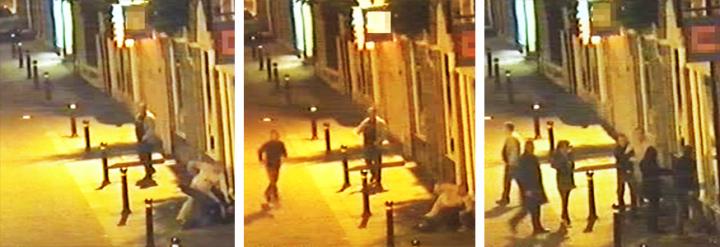It became a popular idea in pop culture, and therefore made its way into social psychology, after the 1964 case of Kitty Genovese, a 28-year-old woman who was raped and murdered in Queens, New York.
A New York Times reporter claimed 38 people witnessed it and though that turned out to be a fabrication, social psychologists Bibb Latané and John Darley formalized it as a phenomenon and numerous other social psychologists claimed to replicate it. But the real world has debunked it.

1. On the bottom right-hand side, a man dressed in a white shirt assaults another man who is on the ground. Some bystanders observe. 2. To the bottom left-hand side, two bystanders leave their standing positions and approach the conflict parties. 3. The two bystanders are joined by others. A male bystander in a dark shirt and jeans pulls the main aggressor from his target, while a female bystander steps between the conflict parties and extends both arms out in a blocking motion. Credit: Lancaster University
Video surveillance of actual crimes instead shows that in 91 percent of cases someone helped victims of aggression and violence, and the more people who see it, the more likely more than one person helps. It may be that instead of feeling embarrassment about being inadequate with more witnesses around, as psychologists previously speculated, people are emboldened by having others nearby. Who doesn't want to be a hero?
The scholars examined video recordings of 219 arguments and assaults in inner cities of Amsterdam (Netherlands), Lancaster (UK) and Cape Town (South Africa).
Bystanders intervened in several ways including:
physically gesturing for an aggressor to calm down;
physically blocking an aggressor or pulling an aggressor away;
consoling the victim.
Some people are just not going to help, of course, that is the diversity of people, but that is why claiming the bystander effect applied to broad populations was a mistake. There was no difference in the rates of intervention between the three cities, even though inner city Cape Town is less safe than Amsterdam. The high levels of intervention across different national and urban contexts suggests that intervention is the norm in real-life inner-city public conflicts.
None of the videos were New York City, of course, the city that is famous for being jaded about crime, but it's more likely that the whole belief proceeded from a false premise and people are not as awful as NYT wants subscribers to believe.





Comments